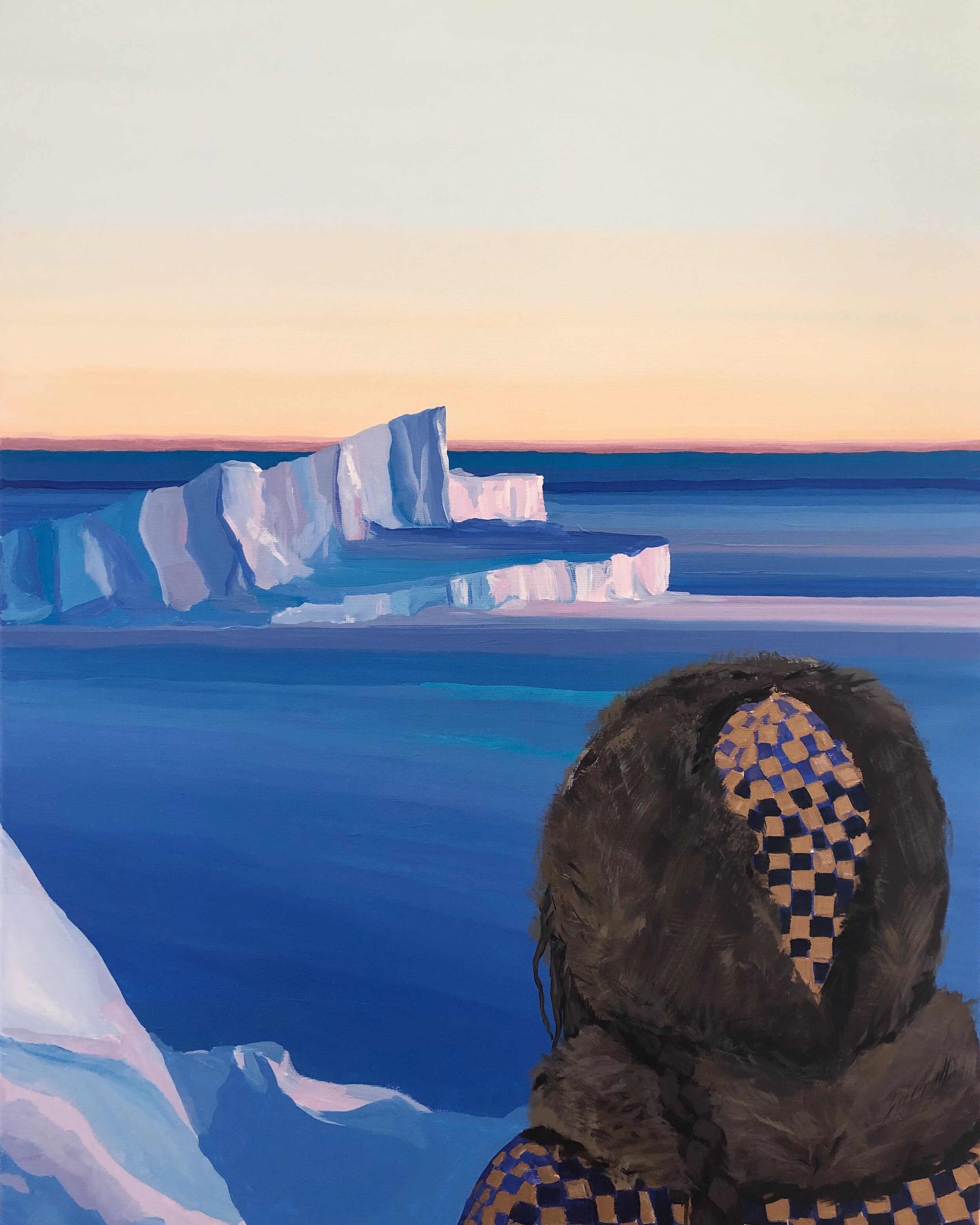Essay on Cristina Ruiz de Castañeda’s Work By Art Historian Maria Veronica Cuomo
Cristina Ruiz de Castañeda featured The Dream, her first solo show on view in Zurich in Autumn 2019. The Swiss-Spanish artist steps with consummate grace into the domain of figurative painting. No strings attached to any academical constraints enable the pure joy of her expression to flow spontaneously through her brushstroke. The conventional ideas of the business world that surrounded her professional life as an economist are left far behind. The painter invites us to discover her dreams embodied in the canvases with unexpected freshness.
Different compositions were staged at the elegant space of the Lindenhof's Gallery. From the ensemble, two main subjects stand out: vintage aircraft and feminine protagonists. In its basic premise, the first motif from Ruiz de Castañeda's creation is strikingly similar to what is called aviation art, a unique artistic niche related to the history of aeronautics which retraces, with accomplished skill, the main events of the aerial navigation. The subject matter of the genre goes from the World War military scenes to the memories of peaceful times like the golden age of aviation in the 1930s. Fascinated by women aviators, Ruiz de Castañeda portrays heroines of legendary proportions as is the case of Jean Batten (1909–1982) who accomplished the first-ever direct flight from England to New Zealand in 1936. This achievement confirmed her place in history as one of the most remarkable female pilots of the 20th century. Each canvas tells a story in images. Batten Turns North-West (2013) remains a homage to the courage of the pioneer during her odyssey. The aviator's plane is painted soaring in a voluptuous grey-blue clouded sky.
The artist recreates, with an evocative appeal, her own visual panoramas that call forth places, experiences, and emotions related to the airplane’s world. Over and over, she depicts women like herself achieving their dreams. The painting Amelia (2016) is inspired by Amelia Mary Earhart (1897–1937) who accomplished for the first time a solo flight across the Atlantic Ocean (1932). Ruiz de Castañeda recreates with her brush the precise moment when the dream became a reality. Still, it is Ruiz de Castañeda’s gift for color that we treasure the most in her compositions, where a varied palette accompanies her work with outstanding energy.
We could acknowledge two moments in the artistic parkour of Cristina Ruiz de Castañeda separated by a life-changing event that transformed her perspective, pushing her to develop her creative vocation with vigorous determination. In this new phase, the painter steps literally into her canvas to personify and realize her illusions and desires. Midnight Creatures (2019), her self-portrait, experiments with a surreal juxtaposition of the exotic and the domestic. Behind the inclined head of the tired protagonist, space is organized in colorful rainbow patterns set methodically. Its regularity is interrupted only by the emergence of two imaginary creatures from the depth of her subconscious. The characterization of the tiny beings in terms of their oriental features and facial expressions confer on them an uncanny quality.
The title of the exhibition recalls, perhaps inadvertently, one of the last canvases of Henri Rousseau (1844–1910), carrying a name identical to that of the show, The Dream (1910). Unexpectedly, we unveil interesting resemblances; Rousseau, also a self-taught painter, pictured on his canvas a naked woman lying down on a red sofa in the lustful jungle. Even here, the background hosts mysterious animals. Like Rousseau and other avant-gardist artists, Ruiz de Castañeda’s work disregards academic conventions of depth and perspective, recreating instead pictorial spaces where flat planes of color convincingly build the scene. The harmonious whole of Midnight Creatures and the rhythms of its lines are so persuasive that they extend their credibility to the depicted narrative.
The artist challenges the viewer to venture into unexplored territories as she did inspire in the heroines of her portraits. The dreams of Cristina Ruiz de Castañeda were proudly displayed on the white walls of the Gallery am Lindenhof, in the heart of the old city, ready to be shared. There, as with most of Ruiz de Castañeda’s narratives, everything revolved around making your dreams come true, which feeds into her optimistic reflection about existence, desires, and freedom in times of woman empowerment.
